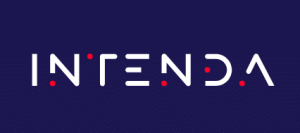In our previous blog, Data Intelligence Platform: Empowering Enterprises with AI, we previewed the AI-enhanced capabilities coming to our Data Intelligence (DI) solution later this year. In this follow-up, rather than talking about what’s coming next, we’re shifting focus to what DI can do for your organisation right now. If you’ve experienced difficulty integrating, analysing and interpreting datasets from different sources, applying business rules to your data or in managing data quality, read on, because DI could be the solution your business needs.
Let’s begin by stating that DI is an ontology platform – a system used to create, manage and apply ontologies. In data science, an ontology is a structured hierarchical framework that defines relationships between business concepts within a specific domain.
Ontology platforms like DI provide more than traditional data management solutions, introducing a foundational layer that gives structure and meaning to your data. A framework of data rules and policies is defined during the design phase. DI’s proprietary configuration engine then applies these rules on the data as it traverses the system.
Whether deployed on-premises, in the cloud or in hybrid environments, DI accelerates project delivery, ensures data quality, facilitates rapid integration and delivers consistent, trustworthy business analytics. Built on a microservices architecture, the solution provides the agility and scalability for continuous innovation and high performance. Having been integrated into the Fraxses stack in 2024, DI is already delivering value in client environments, where it has proved highly effective in bridging the gap between technical data and meaningful insights.
Common Data Models, the pivotal concept underpinning DI, are generalised models for organising data across different domains. They are tailored to reflect the unique logic and terminology of their specific industry, ensuring business domain accuracy and consistency. This standardisation enables seamless data sharing across systems, vendors and regulators, while also aligning business and technical teams around a shared structure. By working within these industry-aligned frameworks, organisations can scale globally while meeting local requirements, and can feed clean, structured data directly into AI and machine learning models for better, faster results.
Embedding business logic and data quality rules directly into Common Data Models validates the content, format and relationships within your data, at source and in real time. Rules are enforced across teams and geographies, improving trust and operational efficiency. They are applied and managed across Common Data Models at scale, eliminating the need for repetitive manual work, reducing human error and ensuring consistent rule enforcement. Rules can be extended as organisations add new data sources or expand their operations. Regardless of how much an organisation’s data environment grows, the system can scale without needing large teams to manage the rules.
Our Data Intelligence platform is already delivering value in client environments, where it is bridging the gap between technical data and meaningful insights.
As part of the Fraxses stack, DI can plug directly into Fraxses’ robust Role-Based security protocols. Data masking and role-based security allows users to define which roles within an organisation have access to specific data. Using the example of a retail chain, store employees would only see data relevant to their specific store, regional employees could access data for all stores within their region, and national-level staff would see data for the entire chain. While these roles have different access privileges, they all use the same Common Data Model. The ability to control access in this way is extremely powerful, ensuring data security and compliance while maintaining a single source of truth across the organisation.
DI shifts the conversation from simply managing data to trusting and using it intelligently – a critical leap for enterprise automation and digital transformation. The concepts that DI introduces are best experienced in a demo. If you’d like to see DI in action and gain a deeper understanding of how Common Data Models, Ontologies, Terms and layered rules work together to unlock the value of your business data, contact Intenda for a live demo at info@intenda.tech.
Thank you for contacting us.
We will be in touch shortly.
